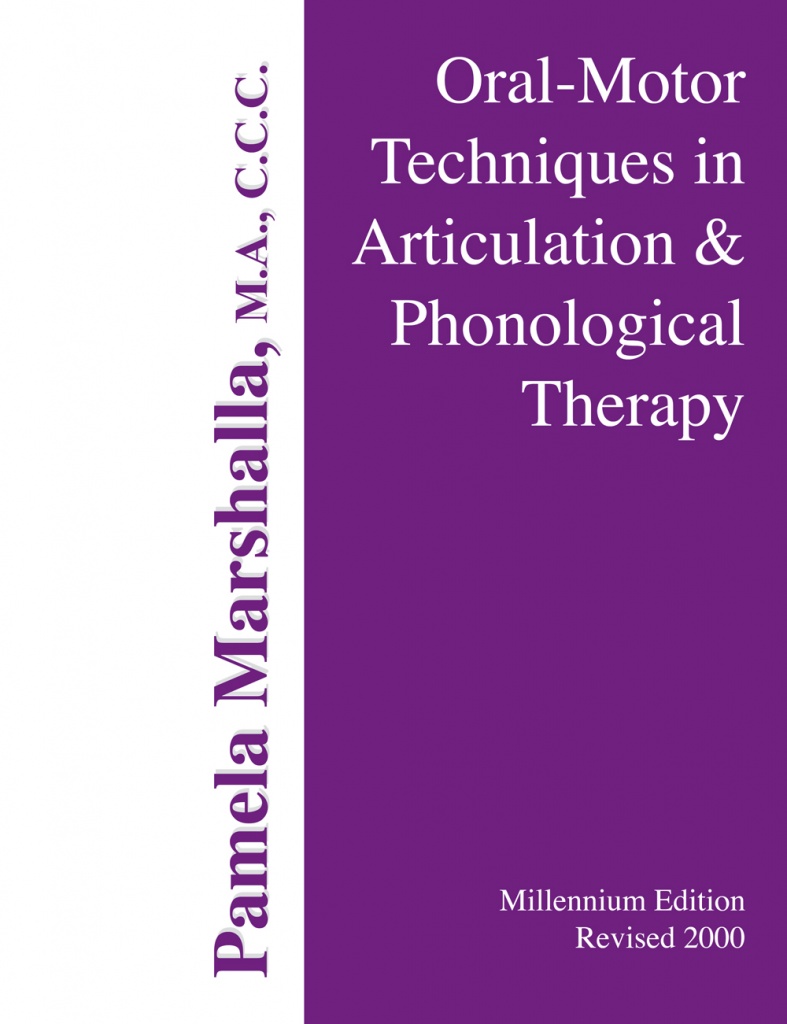This advice-column-style blog for SLPs was authored by Pam Marshalla from 2006 to 2015, the archives of which can be explored here. Use the extensive keywords list found in the right-hand column (on mobile: at the bottom of the page) to browse specific topics, or use the search feature to locate specific words or phrases throughout the entire blog.
How to Define Oral-Motor Therapy (Especially for Naysayers)
By Pam Marshalla
Q: What is oral motor therapy? How do you define it and what is its purpose?
 This is the definition I use: Oral-motor therapy (OMT) is the process of facilitating improved jaw, lip and tongue function. Oral-motor techniques can be used in any of the following therapies: articulation, phonology, dysphagia, feeding, orofacial myology, and occupational or physical therapy.
This is the definition I use: Oral-motor therapy (OMT) is the process of facilitating improved jaw, lip and tongue function. Oral-motor techniques can be used in any of the following therapies: articulation, phonology, dysphagia, feeding, orofacial myology, and occupational or physical therapy.
You can discover the importance of speech movements by engaging in a simple procedure. Count aloud from one to ten. Did anything move? Now count aloud from one to ten without moving anything. Can it be done? You should have remained silent during this second task because one cannot speak without moving. OMT is used in speech therapy to develop oral speech movements. At its very core, speech is movement of four basic speech subsystems as follows:
Breathing Movements
The process of speaking requires that we breathe, and breathing requires the body to move. Try this: sit up nice and straight and inhale deeply, then exhale. You should have felt your chest expand and contract as you breathed in and out. The process of breathing for speech requires special movements of the chest so that the lungs can expand and contract. Like an accordion, air rushes in when the lungs are expanded, and air is pushed out when they are contracted. This is movement that must develop properly for mature speech.
Voicing Movements
Some sounds are made with the voice “on” and others with the voice “off.” Press your fingers gently but firmly onto your voice box so that you can feel the cartilage under the skin. Now say, “Ahhh.” Do you feel the vibrations of sound made in your voice box? Continue to hold and say, “Ssss.” This time there is sound made at the mouth but no vibration in the voice box. Mature speech requires the ability to turn the voice “on” and “off” at very specific times. This requires the development the tiny muscles that control the cartilages of the larynx itself.
Resonating Movements
Sound can travel through the mouth or nose. Say, “Ahhh” and notice that this sound comes out the mouth. Now say, “Mmmm” and notice that the mouth is closed and the sound travels out through the nose. The mechanism that controls this direction of airflow is located at the back of the mouth and is known as the velopharyngeal mechanism. You might know it as the “punching bag” that hangs down in the back of your mouth. Somewhat ike a draw string purse, this mechanism opens and closes the passageway to the nose. When it is open, sound can travel into and through the nose. When closed, sound travels through the mouth. Mature speech requires that children learn how to make this sphincter open and close at specific times for specific speech sounds.
Oral Movements
In order to speak correctly, one must move the mouth (jaw, lips and tongue) in specific ways. Say, “Mmmm” and notice how your lips touch together. Now say, “Nnnn” and notice that your lips do not touch but that your tongue cleaves to the roof of your mouth. These two sounds (phonemes) are very similar. What makes them different is the way the mouth is positioned. Every speech sound is made with a specific prescription of jaw, lip and tongue position. The jaw can move up, down, left, right, forward, back and in rotation. The lips can pucker, round and retract. And the tongue can lift and lower its tip, sides, middle and back. It also can stretch forward and back for speech. Mature speech requires that the jaw, lips and tongue move maturely in all directions, and that they do so both independently and in coordination with one another. Literally, this is what oral-motor therapy is: the process of facilitating improved jaw, lip and tongue movements for speech.
See more of my definitions and editorials defending OMT for SLPs and other professionals in the oral motor and oral-motor controversy sections of this blog.
